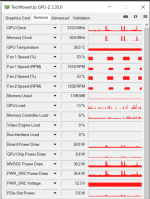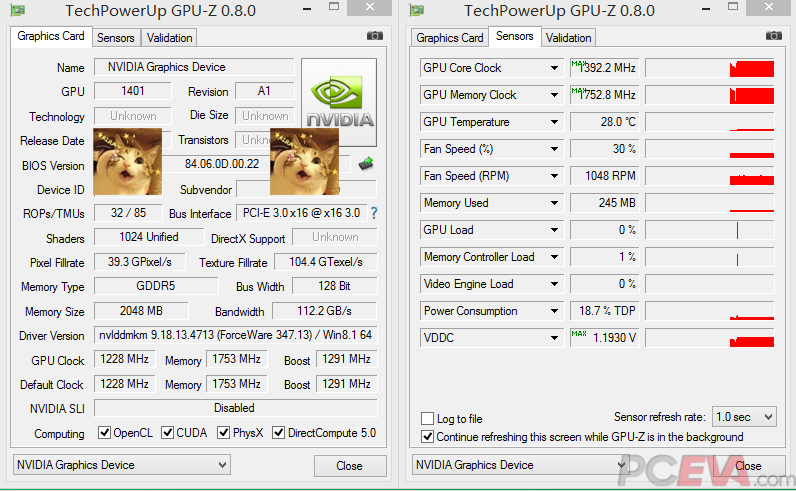
GPU Z POWER CONSUMPTION HOW TO

A graphics card with both 6-pin and 8-pin connectors can have maximum power consumption of 300 Watt (75W + 75W + 150W).Ĭheck out: Best Power Supply for High-end Graphics Cardsīelow you can see Nvidia’s top-end graphics card GeForce GTX 1080 Ti with both 8-pin and 6-pin connectors. The latest High-end graphics cards come with the 8-pin power connector and some of the power-hungry top-end graphics cards can have both 6-pin and 8-pin connectors or two 8-pin connectors. A graphics card with one 8-pin power connector can get a maximum of 225W of power, 75W from PCI Express x16 slot and 150W from the 8-pin connector from the power supply. So if your graphics card power consumption is more than 150W then it will definitely come with an 8-pin connector or two 6-pin connectors. The 8-pin power connector can deliver a maximum of 150W to your graphics card. Most of the mid-range graphics cards from both Nvidia and AMD come with the 6-pin power connector. A graphics card with one 6-pin power connector can have maximum power consumption of 150 Watt as it will get 75W from the PCI Express x16 slot and 75W from the 6-pin connector. So if your graphics card power consumption is more than 75W then it will have one 6-pin PCI-E power connector for its working. Below you can see the PCI-Express x16 connector of the graphics card.Ī 6-pin power connector can supply 75 Watt to the graphics card. Even some mid-range graphics cards can also work on the power from the PCI Express x16 slot alone but higher mid-range graphics cards and high-end graphics card requires external power from the PSU through 6-pin and 8-pin power connectors. A PCI Express x16 slot can provide a maximum of 75 Watts to the graphics card which is enough for entry-level, low profile and budget graphics cards. PCI Express x16 connector connects your graphics to the motherboard and is the only interface through which communication happens. PCI Express x16 connectorĮvery modern-day graphics card comes with a PCI Express x16 connector that goes in the PCI Express x16 slot of your motherboard. Here are the various connectors through which graphics cards get their power. Thank you so much for the tutorial, my temperatures are not exceeding 75 for both cpu and gpu.Must Read: Best Budget Power Supply for Graphics Cards Graphics Card Power Connectors Why is this happening? Why do I have today to check “disable boost” while I didn’t have to yesterday?

it was as if today turbo boost was enabled on its own. When I checked “disable turbo” temps got back to the values of yesterday’s test (62-63). I did the same thing today, but even with the previously saved voltages, I had temperatures reaching high 80’s. Note that the disable turbo was unchecked. It was disabled, and according to Throttestop, after running TS bench, the temperatures did not exceed 62-63 while they were reaching mid-high 70’s. After doing that, I logged in perfectly and checked whether this turned on turbo boost again (which I disabled few months ago). I wasn’t able to restart my computer until I rested my BIOS.

When I kept incrementing, I reached the BSOD for more than -150.4 mV. Here are my temperature values before and after undervolting. Also, if you have any error, simply increase the undervolt value by 10mV and run the benchmark again (If I get any errors, I would change it from -150mV to -140mV and re-test it until I have no errors). The undervolted temperature values should be lesser than that of the original vales we noted earlier. You can run a benchmark test with “TS Bench”. The last stable setup before you experience any crash will be your undervolt limit. If, on the other hand, your laptop is stable at -100mV, start adding -10mV until you start experiencing system crashes. Keep on increasing the value by 20mV until you are stable without any crashes. If your laptop crashes at -100mV, you need to try with -80mV.


 0 kommentar(er)
0 kommentar(er)
